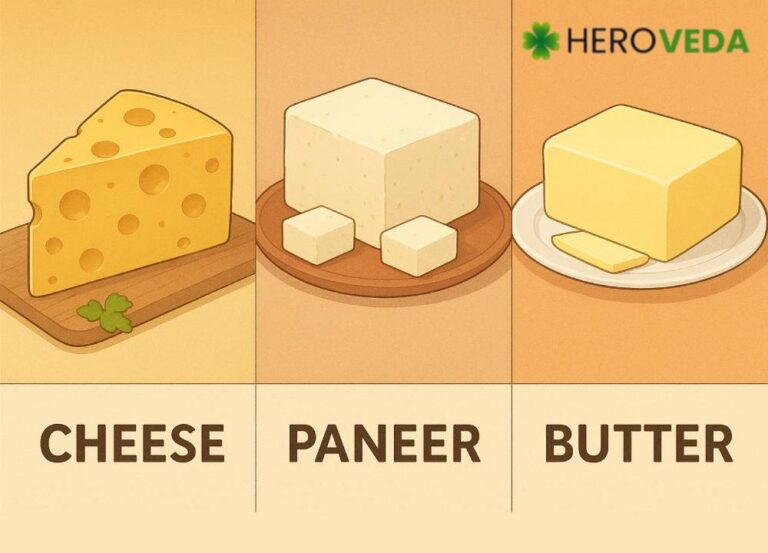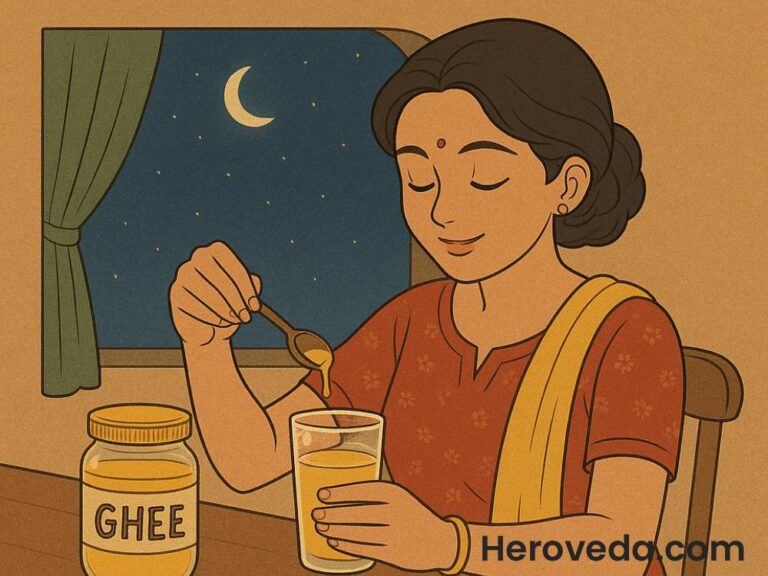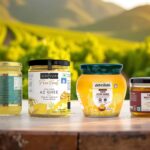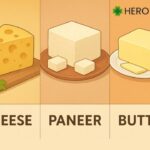Become the Healthiest, Happiest Version of Yourself — Naturally.
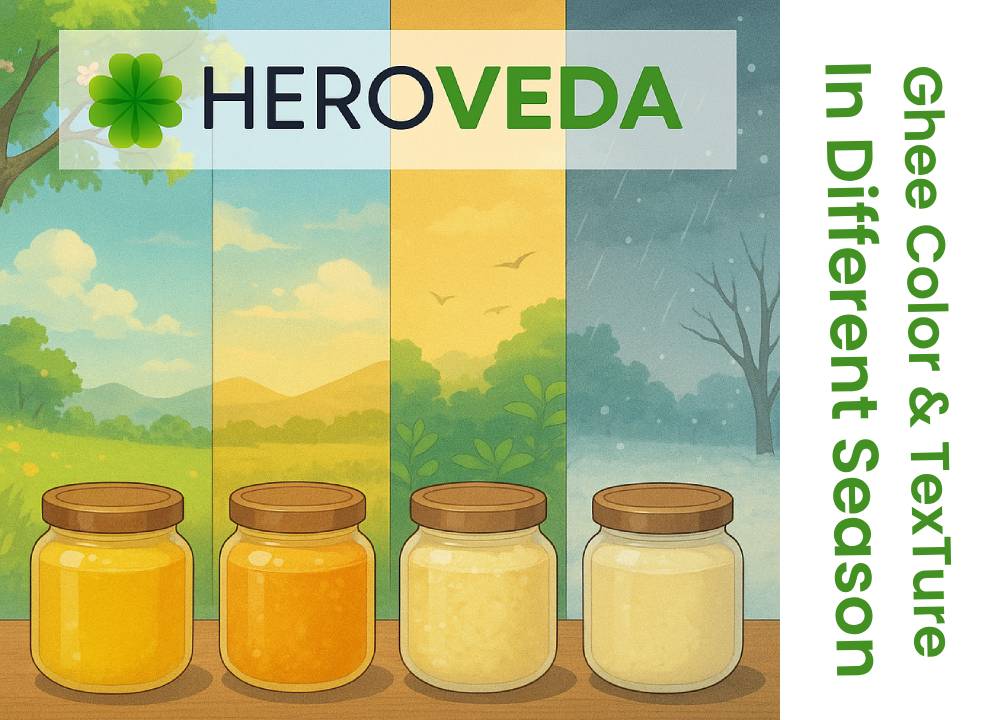
Pure Ghee Texture & Color: Why It Is Different [Science Behind It]
The texture and color of ghee—two features that make each jar unique—aren’t just a matter of looks. They are a mirror to ghee’s science and art, a window into the care given to the cow or buffalo, the choice of feed, subtle changes in climate and seasons, and the time-tested or modern processing methods used.
Let’s take a deep dive into the science behind different ghee texture and color, explained in an expert-yet-conversational way.
What Is Ghee?
Ghee is a type of clarified butter, commonly used in Indian cooking, Ayurveda, and many wellness routines. It is made by simmering butter to remove water and milk solids, leaving behind pure, aromatic fat rich in flavor and nutrition.
Why Do Ghee’s Color and Texture Vary?
Ghee you find in the market (or even in your own kitchen!) may be grainy, smooth, semi-solid, or liquid, and range in color from golden yellow to white or even a hint of greenish. These variations are natural and result from a mix of biological, chemical, and environmental factors.
The Expert Science Behind Ghee Texture
1. Fatty Acid Composition
- Ghee is mostly fat, but not all fats are the same. Nearly 80% of the fat in cow and buffalo milk consists of five main fatty acids: palmitic, oleic, stearic, myristic, and butyric acids. Their proportions differ depending on the breed of animal and its diet.
- More high-melting-point fats like palmitic and stearic make ghee firmer and promote “grains”—those beloved crystals in premium ghee.
- More short-chain and unsaturated fats (like butyric acid) make ghee softer and smoother with fewer grains.
2. Crystallization and Granulation
- As ghee cools, its fats “crystallize.” Just like ice in a freezer forms larger or smaller crystals depending on cooling speed, ghee’s structure can be waxy, pasty, or grainy depending on how quickly and at what temperature it is cooled.
- Slow, gradual cooling (as in the traditional bilona method) results in larger, prominent grains—a sign of artisanal ghee.
- Fast cooling (such as in industrial chillers) results in finer crystals or smooth, pasty ghee.
3. Temperature and Storage
- Warm conditions (above 30°C)—Ghee is a clear, pourable liquid.
- Cooler (18–22°C)—Ghee becomes semi-solid, often with a pronounced grainy texture.
- Cold (below 18°C)—Ghee solidifies, becoming waxy and hard.
4. Method of Preparation
- Traditional Bilona Ghee: Churned from cultured butter, boiled slowly—tends to be grainier, more aromatic.
- Industrial Ghee: Made directly from cream or butter, often processed quickly—smoother, pastier.
The Science Behind Ghee Color
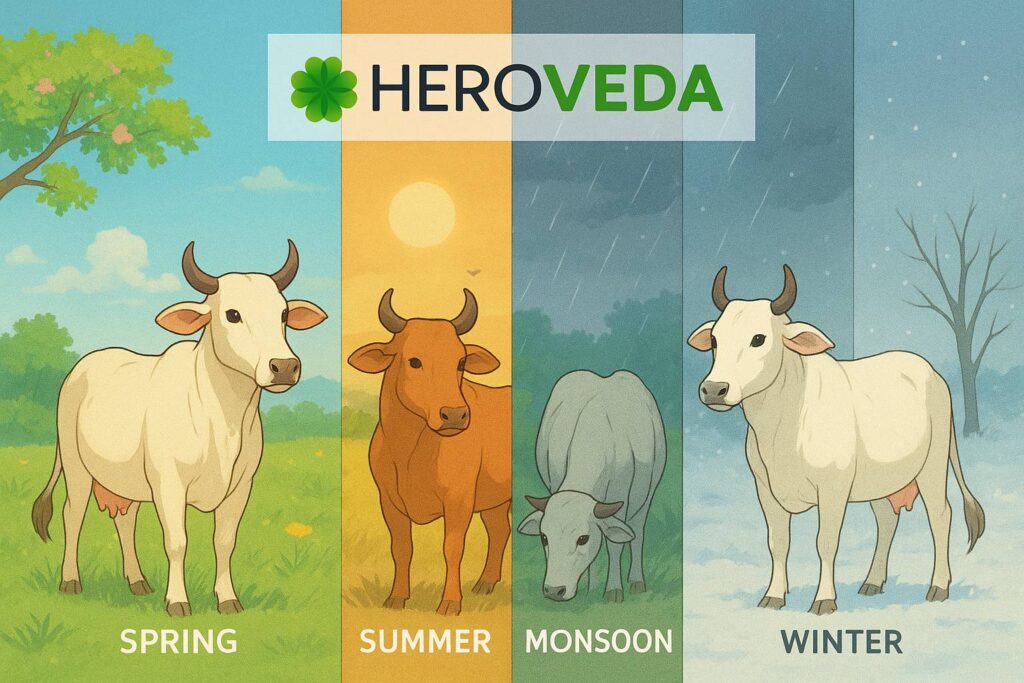
1. Carotenoids and Pigments
- Cow’s diet affects the color most. Cows that eat fresh grass produce milk rich in beta-carotene, a pigment that gives ghee its golden yellow shade.
- Buffalo ghee is white or pale with a sometimes greenish tinge—buffalo milk lacks carotenoids but can have pigments like biliverdin.
- Ghee made from mixed milk tends to be straw-yellow.
2. Species and Breed
- Cow ghee: Golden yellow due to carotenoids.
- Buffalo ghee: White or slightly greenish due to different pigments and lack of carotenoids.
- Goat or sheep ghee: Less common, can vary in color based on respective fatty acid and pigment levels.
3. Seasonal and Regional Variations
Climate and available vegetation shift through the year, which changes the milk’s carotenoid levels and micro-nutrient profile.
- Summer: Cow ghee is more vibrantly yellow.
- Winter/monsoon: Ghee may be less yellow or paler.
4. Aging and Storage
- Fresh ghee is typically lighter, while storage and exposure to air can deepen the color due to oxidation and breakdown of carotenoids.
Also Read:
Ghee Texture: Types and What They Mean
Ghee Color: Facts and Table
| Ghee Type | Typical Color | Key Pigments | Breed/Source | Major Influence |
|---|---|---|---|---|
| Cow ghee | Bright, golden yellow | Beta-carotene (pro-vitamin A) | Desi, Gir, Jersey cows | Diet, breed |
| Buffalo ghee | White to pale yellow or greenish | Biliverdin, absence of carotenoids | Murrah, Surti, Jaffarabadi buffalo | Pigment type, diet |
| Mixed milk ghee | Straw yellow | Both carotenoids and minor pigments | Both cow and buffalo | Mix proportion |
| Industrial/commercial ghee | Uniform (may be artificial) | May contain coloring additives | Various | Processing, coloring |
The Expert’s Perspective
Ghee’s Unique Signature
Every jar of ghee is like a fingerprint, carrying traces of the animal, its care, natural environment, and method of processing. Here’s how:
- Animal Feed and Environment: Fatty acid composition and pigment content of milk (hence, ghee) reflect what the animal eats and its lifestyle. Pasture-fed cows create richer, more nutritious, golden ghee. Stabled animals on dry fodder make a lighter product.
- Seasons and Weather: Summer access to green grass enhances carotenoids, while winter may reduce the yellow pigment.
- Processing Artistry: Traditional methods (like Bilona) emphasize slow heating and natural granulation for superior texture and aroma.
- Chemistry in Action: Saturated fats, unsaturated fats, and the science of crystallization result in the marvel of ghee grains—prized in India and a sign of authenticity.
Color Science
Color experts grade ghee using scientific instruments, breaking down color into:
- L (lightness)
- a (red-green axis)
- b (yellow-blue axis)
- Yellowness Index (Y)
- Whiteness Index (W)
Cow ghee scores high on “b” and “Y” (more yellow), buffalo ghee scores high on “W” (whiter).
Chemistry of Ghee Texture and Color
Key Chemical Players
Fatty Acids
- Palmitic, stearic acids: High melting, encourage graininess
- Butyric, caproic acids: Short-chain, lower melting, make softer ghee
Pigments
- Beta-carotene: From green plants, yellow-orange color
- Biliverdin and bilirubin: Greenish pigments, more in buffalo milk
Traces of Protein and Moisture
Factors Influencing Ghee Texture and Color
Animal Factors
- Species (cow, buffalo, etc.)
- Breed differences
- Lactation period (early lactation gives whiter ghee)
- Health and feeding
Environmental Factors
- Region (grassland, arid, highland)
- Season (summer grass leads to yellow ghee)
Production Factors
- Method (Bilona/cultured vs. direct cream)
- Rate of heating and cooling (controls granulation)
- Fermentation and curd use
- Clarification time and temperature
Storage Factors
- Temperature post-making
- Jar/container type (glass vs. tin)
- Duration and exposure to sunlight or air
The Role of Granulation: The “Danedaar” Myth
In the Indian subcontinent, grainy ghee (“danedaar”) is a mark of traditional, high-quality ghee. Large, sand-like grains are seen as proof of artisanal skill. This structure is formed due to:
- The high content of long-chain saturated fats
- Slow, controlled cooling after removing the ghee from heat
Fast cooling or lack of saturated fat doesn’t allow granules to form; such ghee is smooth, often seen in industrial brands.
Understanding Whiteness vs Yellowness: Table
Is Color Linked to Nutrition?
Ghee rich in beta-carotene (golden yellow) contains a precursor to vitamin A, a vital antioxidant. However, all pure ghee provides saturated fat essential for energy and absorption of fat-soluble vitamins; color is an indicator of dietary carotenoid intake but not the only sign of quality.
How Can You Tell If Ghee Is Pure?
- Color and texture fluctuate with the seasons and animal diet.
- Industrial ghee may have uniform color—a sign of additives.
- Pure ghee forms natural layers and changes with room temperature; it’s never perfectly uniform all year.
Also Read:
Quick FAQs About Ghee Texture & Color
Why is my ghee sometimes grainy and sometimes smooth?
Temperature and the speed of cooling after making ghee control granulation. Slow cool = grains. Fast cool = smooth.
Does white ghee mean adulteration?
Not necessarily! Buffalo ghee is naturally white. But “too white” cow ghee could mean mixing with buffalo fat or industrial processing.
Why does ghee get more solid in winter?
Ghee solidifies at low temperature. The more saturated the fat, the harder it gets.
Does yellow color guarantee purity?
Yellow shade comes from cow’s diet and isn’t a guarantee alone; check aroma, flavor, and natural layering too.
Table: Science of Ghee at a Glance
| Factor | Ghee Impact | Science Reason | Traditional Sign | Modern Brand Result |
|---|---|---|---|---|
| Animal Feed | Color (yellow/white), Aroma | Beta-carotene pigment, fatty acid profile | Deep yellow, grassy aroma | Paler, mild |
| Processing | Texture, Graininess | Slow cooling = graininess | Big crystals | Smooth, little/no grains |
| Storage Temp | Solid/semi-solid/liquid | Sat. fat melts above 30°C | Changes seasonally | Uniform in cold storage |
| Season | Color, Nutrition | Grass in summer = carotene | Yellower in summer | Always uniform |
| Adulteration | Color & uniformity | Additives can standardize | Fluctuates | Always identical |
Final Thoughts
Ghee’s amazing range of textures and colors is not just a delight for the senses—it is a mosaic of Indian agricultural tradition, animal care, climate, chemistry, and culinary heritage.
The next time a spoon dips into a jar whether grainy or smooth, golden or white know that it is the result of science and nature working hand in hand. Appreciating the science beneath the surface will only add to the bliss of savoring this ancient superfood.

